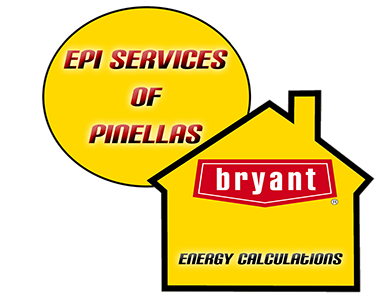
Hi there! Garland here…
Northern Air, Inc. is associated with EPI Services of Pinellas. At EPI Services of Pinellas, we perform Energy Performance Indicators for both residential and commercial properties.
What is an Energy Performance Indicator needed for ?
A Manual J is the name for a specific protocol (often called “Heat Load Calculation” or “Cooling Load Calculation”) used to determine how much heating/cooling a home needs to stay cool and dry in the summer and warm in the winter. This load calculation process was developed by engineers in the heating and air conditioning industry and has been used for decades to accurately size heating and air-conditioning equipment. After completing this load calculation process, one can choose a properly sized piece of machinery to satisfy the load.
When you have a Manual J done the report provides three main pieces of information regarding heating and cooling load:
Heating Load: This is how much heat your house will require on the almost-coldest day of the year, in the middle of the night (when there’s no help from the sun). This is the number, or load, used to select a piece of heating equipment.
Sensible Cooling Load: This is the amount of sensible heat (the type you measure with a thermometer) that your system should be able to remove on the almost-warmest day of the year, during the daytime (when the sun is heating up the building). This is used, IN COMBINATION WITH the next load-type, to select the cooling equipment.
Latent Cooling Load: This load describes how much moisture your system should be able to remove under “worst-case” conditions. Worst-case for latent loads is typically when it’s hot and wet outside (daytime in the summer).
These three loads are used to select a piece of machinery that fits the loads (heat losses or gains) of your home. When selecting air conditioners or heat pumps, the two cooling loads should be used. And, the selected piece of machinery should be able to supply the proper amount of BOTH latent and sensible cooling, and be less that 15% over-sized, based on the Manual-J load calculation. This will ensure your system is capable of proper dehumidification (assuming the distribution system is performing properly).
Why is having a properly sized HVAC system important?
Efficiency: You wouldn’t buy an 18-wheeler just to drive around town, right? That vehicle wouldn’t match the task at hand, and would cost you a lot more money to operate. The same goes for heating and cooling equipment. If your system is larger than necessary, it means that you are paying to operate larger fans and larger compressors. The goal is to buy one that is sized “just right.” This can be equated to highway mileage in a vehicle. If it runs steadily, without stopping and starting, it’s more affordable to operate.
Comfort: Contrary to popular belief, bigger is NOT always better. Over-sized air conditioners are not able to dehumidify the air inside the home. Most air conditioning units need to run for ~10 minutes before their coils get cool enough to cause condensation (this is what dehumidifies the air in your home). If the system is over-sized, the thermostat will be satisfied before the unit is able to remove any significant amount of moisture. This creates cold, clammy conditions. Properly sized air conditioners should produce relative humidity levels of ~50% in the cooling season (indoor design conditions vary with climate). If your relative humidity is larger than this, you may have an over-sized system that is not staying on long enough to properly dehumidify.Heating season comfort is also impacted by over-sized machinery; especially with heat pumps. Why you ask? Because heat pumps produce supply air that is roughly 100 degrees, compared to furnaces that produce supply air that is 125-135 degrees. This means that a heat pump has to move more air around the house in order to deliver a fixed amount of heat. If a heat pump is over-sized, this means that there will be more air than necessary moving about the house, creating drafts, and causing comfort complaints. Heat pumps should be sized based on the cooling load of the house (to ensure proper dehumidification), with the rest of the heating needs delivered by the “auxiliary” heat – typically electric resistance strip heaters or furnaces.
Air quality: If your system is over-sized and therefore not properly dehumidifying, you’ll have moisture problems. This may show up as strange smells, mold or mildew growing in areas that don’t receive much air flow, excessive presence of dust mites, etc. In much of the nation, humidity control is the main purpose of air conditioning systems. In order for them to control this humidity, they MUST be sized properly.
Therefore, we offer the following to our customers:
● Energy Performance Indicator
● Computer Analysis Service
● Residential & Commerical
● Manual J-Load / 8th Edition
● A/C Drawings
● Heat Load Calculations
Information, data and designs from this website may not be copied, archived, mined, stored, captured, harvested or used in any way except in connection with use of the site in the ordinary course for its intended purpose.